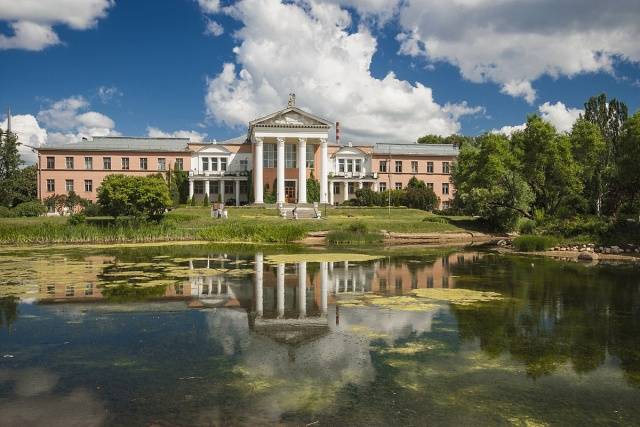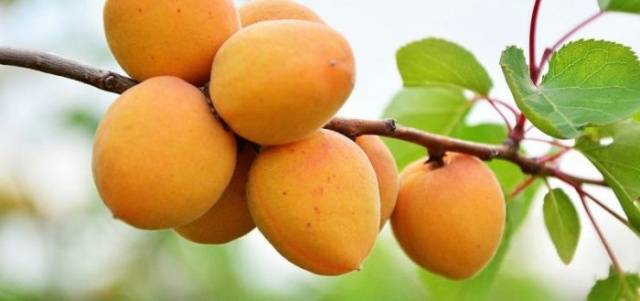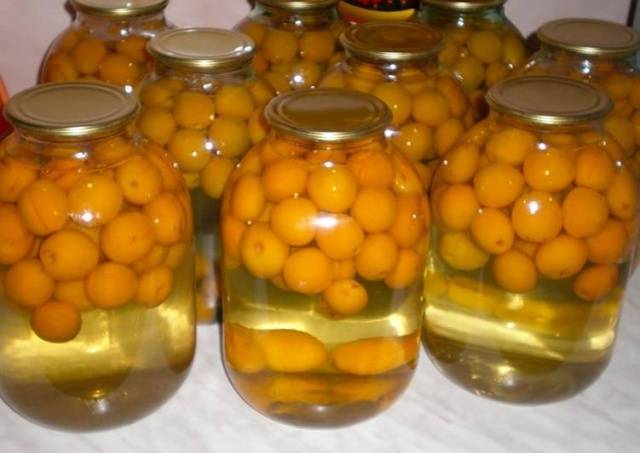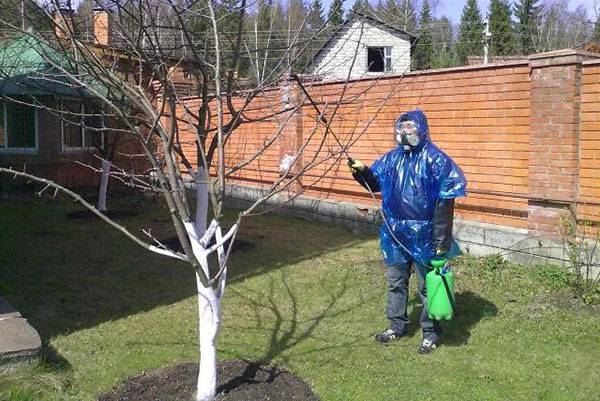Content
Tsarsky apricot is one of the most successful hybridization results of this fruit crop. Breeding work usually lasts for decades, and in rare cases its results fully satisfy the desires of the authors. With this variety, such a problem did not arise, the main tasks - obtaining a tasty, early ripening and frost-resistant variety were successfully completed.
Breeding history
The Tsarsky variety was bred in 1986 by the famous breeder L.A. Kramarenko in collaboration with the head of the department of the Main Botanical Garden of the Russian Academy of Sciences A.K. Skvortsov. For more than 50 years, two famous botanists have bred various varieties of apricots, adapted to the conditions of the Central region, and it is to this selection work that gardeners owe the appearance of Tsarist apricots in the Moscow region.
The main botanical garden is the place where the variety was bred
The new variety was obtained by free pollination of seedlings, which was carried out over several generations. The final work on the hybrid was completed within 15 years, and in 2004 the Tsarsky apricot variety was entered in the State Register for the Central Region. According to the reviews of many summer residents for the Moscow region, the best variety of apricot is Tsarsky.
Description of culture
Tsarsky apricot trees grow no more than 3.5-4 meters in height. Growth rates in the Moscow region are not high. The plant forms few shoots. The degree of their branching is considered average, however, the first 4-5 years of a tree's life can be high due to the large amount of nitrogenous fertilizers used during planting.
Starting from the age of five, the growth rate of shoots is normalized, and the crown of the tree acquires an oval shape, flattened in the horizontal direction. The crown density is low, so the time between pruning mature trees can be cut in half compared to standard.
The fruits of the hybrid are relatively small. Their size is about 3.5 cm in diameter, and their weight ranges from 20 to 22 g. The shape of the fruit is round or oval (slightly elongated). The skin of the fruit is moderately thick, with well-visible pubescence. Its color is yellow; red blush can occupy up to 30% of the fruit area. Below is a photo of Tsarsky apricot.
The fruits have a dense orange pulp. The separation of the skin from the pulp is easy, without breaks in the latter. The apricot stone is small, its share in the mass of the fruit is about 10%. As well as the skin, it separates well from the pulp.
The apricot pulp of the Tsarsky variety contains many substances that have a positive effect on the human body. These include vitamins, organic acids, trace elements. In particular, among the plants of our climate, this apricot variety has the maximum concentration of potassium.
100 g of pulp contains:
- sugars - 7.9 g;
- titratable acids - 1.6 g;
- potassium - 0.315 g;
- other dry substances - 16.1 g.
Characteristics
The set of characteristics of the Tsarsky variety can be called successful. The crop combines acceptable yields, short ripening times and good winter hardiness.
Drought resistance, winter hardiness
Drought resistance of the plant is quite high.Theoretically, the Tsarsky variety can do without watering at all, and it will have enough moisture obtained from natural precipitation. In the event of a prolonged absence of precipitation, the hybrid is able to withstand a drought lasting up to 2.5 months without any special problems.
The plant has high winter hardiness. The bark of the Tsarsky variety tolerates the alternation of thaws and frosts well, practically without cracking. The frost resistance of the Tsarsky apricot is also excellent. The plant can withstand frosts down to -40 ° C.
Pollination, flowering period and ripening times
The question of whether the Tsarsky apricot is self-fertile or not should not worry the summer resident. Kramarenko and Skvortsov, carrying out plant breeding for the Central region, tried to obtain exclusively self-fertile varieties that do not require pollinators of another species. And the Tsarsky variety was no exception: it is self-fertile, that is, pollinated with the pollen of its own variety.
The flowering period of the plant occurs in early April. Since this is a very early flowering time, insects cannot be used as pollinators for Tsarsky apricot. Pollination takes place with the help of the wind. Since the Tsarsky apricot is a monoecious plant, one tree is enough for its pollination (so-called self-pollination). The size of the flowers of this variety is 4 cm. These are quite large flowers, one might say, the largest in Russia.
No matter how good the characteristics of the Tsarsky apricot are, a feature of the plants of this variety is the vulnerability of flowers to frost in early and mid-spring. Since flowering occurs early, a large percentage of ovaries may die. To prevent this, it is recommended to cover the tree during flowering with a film or even just a dense fabric folded in half. Such protection will not interfere with pollination, but will help preserve most of the ovaries.
Fruit ripening occurs in early August. With fewer sunny days or colder summers, this period may shift by 1-2 weeks.
Productivity, fruiting
In the description of Tsarsky apricot, which is given in botanical reference books, an average yield of 25-40 kg from one tree is indicated. Realities can be more modest. In some areas, with the mass cultivation of apricots of this variety, there was a significant drop in yield to 7.5 kg per tree. True, it was about very unfavorable growing conditions and the first or second years of fruiting.
Reach the yield indicated in the "passport" on average by 5-6 years of plant life or 2-3 years of fruiting. According to reviews of the Tsarsky apricot variety, the yield of an adult plant from season to season remains practically unchanged and can be increased or decreased due to a more rational formation of the tree crown.
Scope of the fruit
The pulp of the fruit, despite its density, is quite juicy and tender. It is very tasty and aromatic. The taste of the pulp is sweet and sour. The aroma is strong and pleasant. On the tasting scale, the taste of this variety is rated as 4.5 out of 5 possible.
The fruits are of universal use. They are used both fresh, just plucked from the plant, and in various canned foods: compotes, juices and jams. Also, the fruits can be used for freezing.
Keeping quality and transportability of the Tsarskiy variety is good. When stored in the refrigerator, the fruit retains its taste for two weeks.
Disease and pest resistance
The variety is resistant to diseases and pests. Even in the absence of any preventive measures, the defeat of fungal diseases occurs only in very rainy years or in the absence of plant care at all.
Advantages and disadvantages
Advantages of the Royal Apricot:
- excellent taste of fruits;
- fruits are well preserved for a long time and have universal application;
- good resistance to diseases and pests;
- high frost resistance and winter hardiness;
- self-fertile and self-pollinated variety (only one tree is enough for growth and fruiting).
Disadvantages of the variety:
- relatively small fruit size;
- low productivity in the first years of fruiting;
- fruiting largely depends on the degree of flower preservation during late spring frosts.
Landing features
As such, the planting features of this variety are absent. You should adhere to the usual techniques for planting this crop in the middle lane.
Recommended timing
Planting of Tsarsky apricot in the Moscow region is carried out in the spring (first decade of April) or in the fall (no later than the second decade of October).
Choosing the right place
The plant needs a flat, sunny area with protection from the wind. In lowlands (danger of cold air) and on the southwestern slopes (high growth rates interfere with normal fruiting), it is better not to plant apricots. The soil should be fertile and loose. Groundwater is not higher than 1 m.
What crops can and cannot be planted next to an apricot
Apricot does not get along well with most crops in the Central Region. Normally, he tolerates the neighborhood only with dogwood and some vegetables of medium height. The neighborhood of apricot with the following crops is categorically unacceptable: cherries, walnuts, currants, raspberries, almost all Nightshade and Pink.
Landing algorithm
The distance between trees when planting should be at least 4 m (both in a row and between rows). Planting is carried out in pits 50-70 cm deep. A peg is installed in the pit to tie a young seedling. 10 kg of humus and 1 kg of superphosphate are placed at the bottom of the pit. The seedling is installed in a pit, sprinkled with soil, tied to a peg and poured with 20 liters of water. The inoculation site is located 10-15 cm above the ground level.
Follow-up care of the culture
Cultivation of Tsarsky apricot is quite standard. Regular watering (every 2-4 weeks, 20-30 liters under a tree), followed by loosening the soil. Top dressing twice a season. In the spring, 1 sq. m is entered:
- 4 kg of humus;
- nitrogen fertilizers 6 g;
- phosphoric 5 g;
- potash 8 g.
In autumn - 10 kg of humus under one tree.
Preparation for the winter consists in pruning the tree and whitewashing the trunk. The latter will also help protect the tree from rodents. In case of cold winters, cover with a thin film is recommended. The soil within a radius of 1 m from the trunk is mulched with leaves, straw, peat or humus; mulch thickness - 20 cm.
The variety needs regular but infrequent pruning. The basic rule is simple: do not allow excessive thickening of the crown and do not allow the upper shoots to overtake the lower ones in growth.
Diseases and pests, methods of control and prevention
Disease | Control methods | Prophylaxis |
Moniliosis | After flowering - a solution of Horus preparation (3 g per 10 l of water). When forming fruits - Bordeaux liquid 3%. Before harvesting - a solution of the Switch preparation (5 g per 10 l of water). | Spraying before flowering with 3% Bordeaux liquid. |
Clasterosporium disease | Destruction of the affected parts of the plant. Preparations: Horus (3 g per 10 liters of water) or Bordeaux liquid 4%; you can copper sulfate 1%. | Spraying with the same preparations every 2 weeks. |
Vertical wilting | Bordeaux liquid 3%. | Avoid waterlogging of the soil. |
Pest | Control methods | Prophylaxis |
Plum aphid | Acaricides, for example Fitoverm. Treatment of affected areas with 1% soap solution. | Destruction of fallen leaves and weeds around the tree. Fighting ants. Whitewashing the trunk. |
Moth | Chlorophos 0.2% | Cleaning the bark from cocoons and caterpillars. Application of glue belts. Sweet syrup and yeast butterfly traps. |
Sawfly | Insecticides of the contact-intestinal type, for example, Decis. | Regular loosening of the soil. Destruction of the affected growth. Application of glue belts. |
Conclusion
Tsarskiy apricot is one of the best varieties adapted for cultivation in the Central region. The crop has an average yield that is stable from season to season.The low, medium-sized crown makes it easy to handle the tree and pick the fruit.
Testimonials
Below are reviews of Tsarskoe apricot in the Moscow region.


















